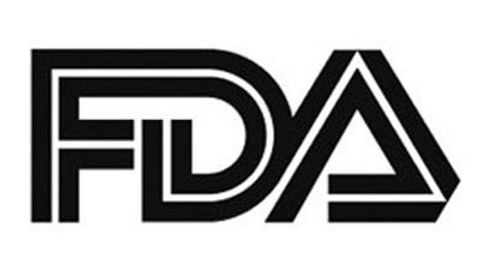FDA Approves Eflapegrastim for Chemotherapy-Induced Neutropenia
The FDA has approved eflapegrastim-xnst injection for adult patients with non-myeloid malignancies receiving myelosuppressive anti-cancer drugs linked with clinically significant incidence of febrile neutropenia.

The FDA approved eflapegrastim-xnst (Rolvedon) injection to decrease the incidence of infection, as manifested by febrile neutropenia, in adult patients with non-myeloid malignancies receiving myelosuppressive anti-cancer drugs associated with clinically significant incidence of febrile neutropenia.1
The basis of the approval comes from data of the phase 3 ADVANCE (NCT02643420) and RECOVER (NCT02953340) trials. In these studies, eflapegrastim demonstrated the pre-specified hypothesis of non-inferiority vs pegfilgrastim (Neulasta) in mean duration of severe neutropenia with a similar safety profile to pegfilgrastim.
Eflapegrastim is a novel, long‐acting recombinant human granulocyte-colony stimulating factor (G‐CSF) that consists of a recombinant human G‐CSF analog conjugated to a human IgG4 Fc fragment via a short polyethylene glycol linker.2
“[Eflapegrastim's] approval marks Spectrum’s transformation to a commercial-stage company with the opportunity to compete in a $2 billion dollar market, and offers a unique value proposition,” said Tom Riga, president and chief executive officer of Spectrum Pharmaceuticals, in a press release. “This approval is a significant milestone for our development team and collaboration with Hanmi Pharmaceutical. On behalf of Spectrum, I would like to thank all of the patients, families, health care providers, and our own team members for bringing this goal to fruition.”
Previously in October 2019, an updated biologics license application (BLA) was submitted to the FDA for eflapegrastim for the treatment of neutropenia in patients with cancer receiving myelosuppression drugs. Then in August 2021, the FDA issued a complete response letter to the developer of eflapegrastim in this patient population and cited manufacturing deficiencies, requiring the facilities be reinspected.
In both the ADVANCE and RECOVER trials, the efficacy and safety of eflapegrastim vs pegfilgrastim was evaluated in the management of neutropenia in patients with breast cancer receiving docetaxel and cyclophosphamide.
Patients with early-stage breast cancer were enrolled in ADVANCE and RECOVER and randomly assigned to fixed‐dose eflapegrastim at 13.2 mg/0.6 mL(3.6 mg G‐CSF) or standard pegfilgrastim (6 mg G‐CSF) following standard docetaxel plus cyclophosphamide chemotherapy for 4 cycles.3,4 Subcutaneous injections of eflapegrastim or pegfilgrastim were administered on day 2 of each cycle, approximately 24 hours after chemotherapy. Patients received 75 mg/m2 of intravenous (IV) docetaxel and 600 mg/m2 of IV cyclophosphamide on day 1 of every 21-day cycle.
The primary end point of each trial was the duration of severe neutropenia in cycle 1 of treatment with secondary end points including duration of severe neutropenia in cycles 2 to 4, time to absolute neutrophil count (ANC) recovery, depth of ANC nadir, incidence of febrile neutropenia, incidence of neutropenic complications, relative dose intensity, and safety.
Findings from the ADVANCE trial showed that patients who received eflapegrastim (n = 196) had incidence of severe neutropenia in cycle 1 of 15.8$ vs 24.3% for those given pegfilgrastim (n = 210). This demonstrated an 8.5% absolute and a 34.9% relative risk reduction (P = .034).2
In the eflapegrastim arm, the mean cycle 1 duration of severe neutropenia in was 0.20 ± 0.503 days vs 0.35 ± 0.683 days in the pegfilgrastim arm, showing in a difference in mean duration of severe neutropenia of −0.148 days (95% CI, −0.264-−0.032).
These results ultimately met the study's primary end point of non-inferiority (P < .0001).
Within the RECOVER trial, patients in the eflapegrastim arm (n = 118) had a mean cycle 1 duration of severe neutropenia of 0.31 ± 0.688 days vs 0.39 ± 0.949 days in the pegfilgrastim arm (n = 119), resulting in a difference in mean duration of severe neutropenia of −0.073 days (95% CI, −0.292-−0.129).5 The incidence of severe neutropenia in cycle 1 of 20.3% in the eflapegrastim arm compared with 23.5% in the pegfilgrastim arm.
As for safety, the most common adverse effects (AEs) occurring in more than 20% of patients in both trials were fatigue, nausea, diarrhea, bone pain, headache, pyrexia, anemia, rash, myalgia, arthralgia, and back pain. Additionally, 4%of patients who received eflapegrastim discontinued treatment due to AEs, and 3 discontinued due to rash.
References
Spectrum Pharmaceuticals receives FDA approval for Rolvedon™ (eflapegrastim-xnst) injection. News release. Spectrum Pharmaceuticals. September 9, 2022. Accessed September 9, 2022. https://bwnews.pr/3DayQAD
Schwartzberg LS, Bhat G, Peruero J, et al. Eflapegrastim, a long‐acting granulocyte‐colony stimulating factor for the management of chemotherapy‐induced neutropenia: results of a phase III trial. Oncologist. 2020;25(8):e1233-e1241. doi:10.1634/theoncologist.2020-0105
SPI-2012 vs pegfilgrastim in the management of neutropenia in participants with breast cancer with docetaxel and cyclophosphamide (ADVANCE). ClinicalTrials.gov. Updated March 2, 2022. Accessed September 9, 2022. https://clinicaltrials.gov/ct2/show/NCT02643420
SPI-2012 vs pegfilgrastim in management of neutropenia in breast cancer participants with docetaxel and cyclophosphamide. ClinicalTrials.gov. Updated March 2, 2022. https://clinicaltrials.gov/ct2/show/NCT02953340
Rolvedon. Prescribing information. Spectrum Pharmaceuticals; 2022. Accessed September 9, 2022. https://bit.ly/3KZLmFb










